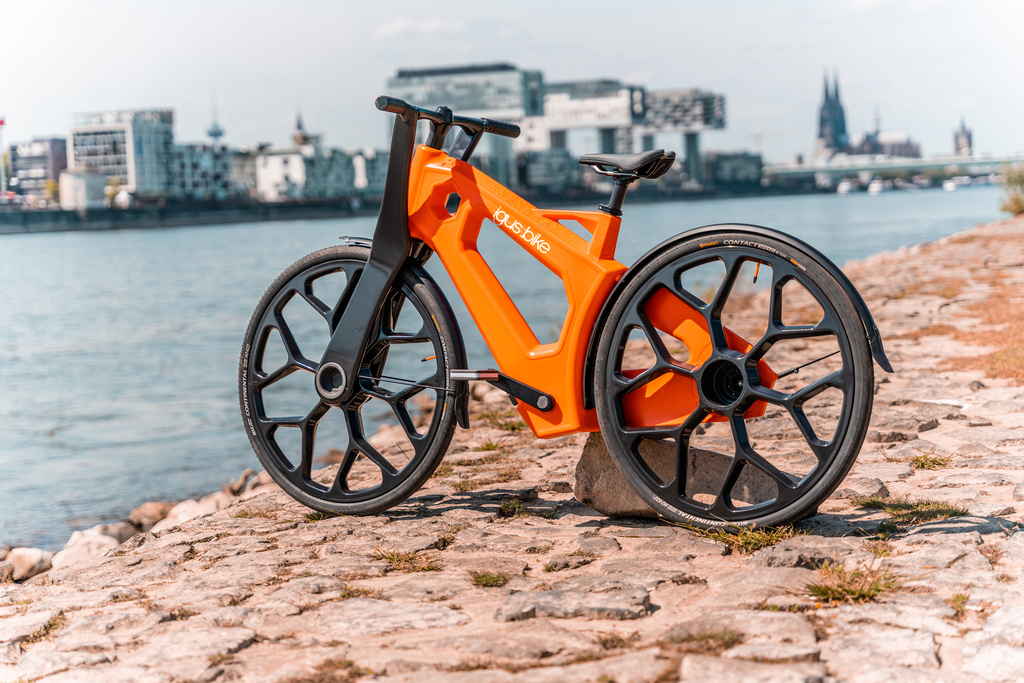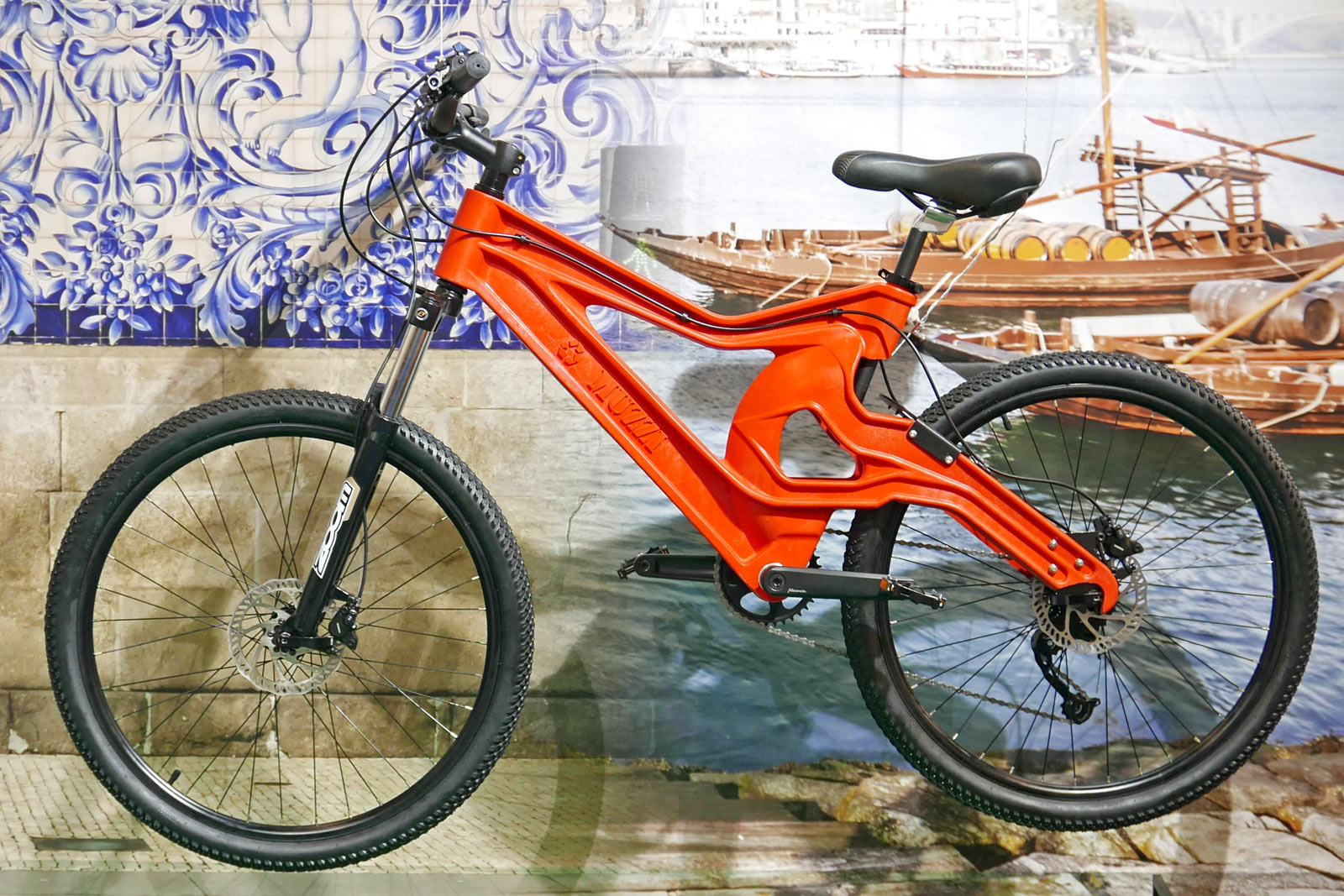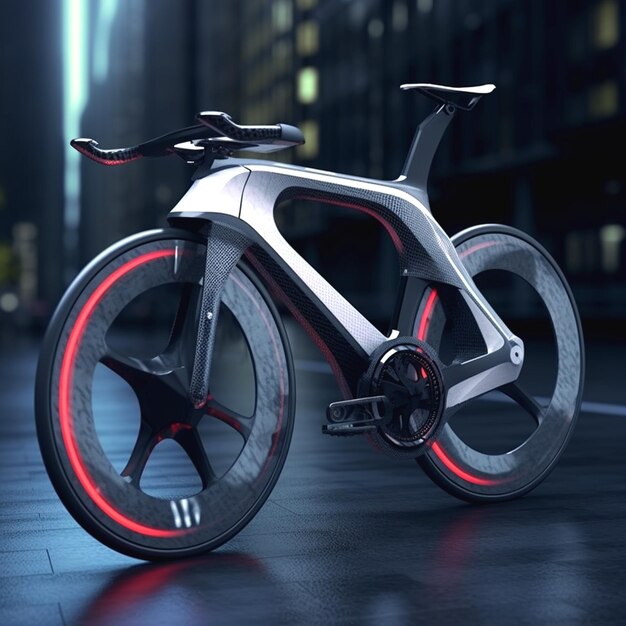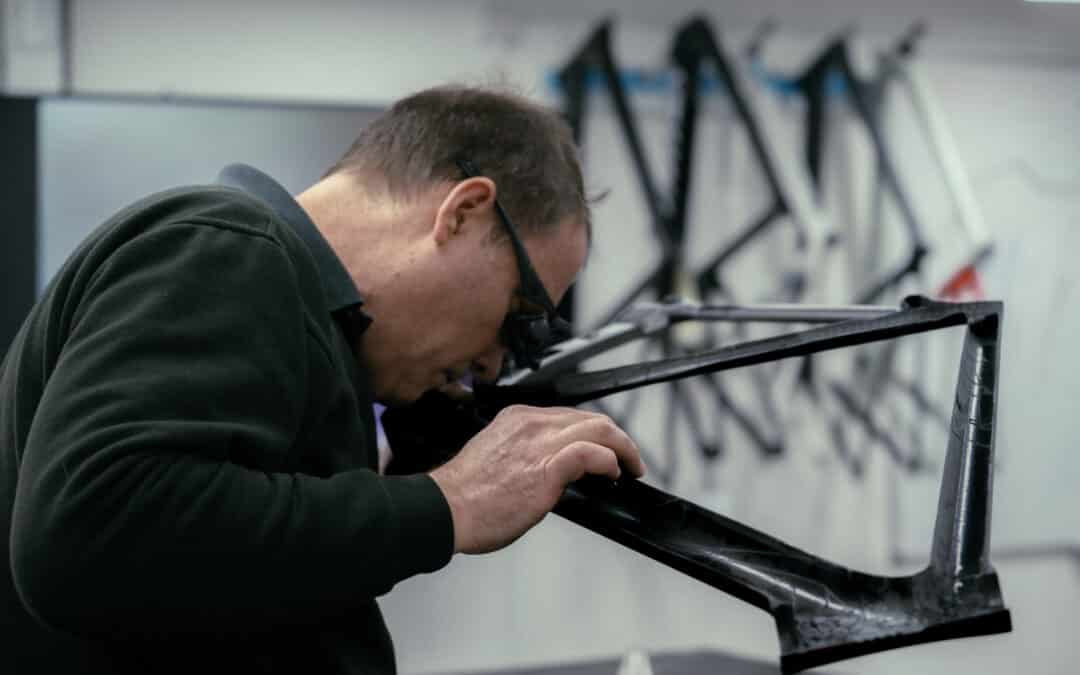Thermodurcissable ou thermoplastique : quelle est la différence ?
Il existe essentiellement deux types de composites à base de carbone : thermodurcissable et thermoplastique.
En ce moment même, composites thermodurcissables dominent - ils représentent près de 99% des cadres de vélo en carbone sur le marché. Il s'agit de la méthode traditionnelle : les feuilles de fibre de carbone sont posées et durcies à l'aide d'un appareil de chauffage à air pulsé. résine époxy. Cette résine est connue sous le nom de matrice - Il lie les fibres et donne au cadre sa forme, sa rigidité et sa légèreté.
Mais il y a un inconvénient. Si l'époxy offre une grande rigidité et un excellent rapport résistance/poids, elle est notoirement fragile sous l'effet d'un impact. Lorsqu'un cadre en thermodurcissable subit un choc, la résine peut se fracturer à l'intérieur. Ces micro-fractures peuvent couper les fibres de carbone comme du fil dentaire - une limitation sévère qui compromet la robustesse.

Igus Thermoplastic Bike - Image de controlsdrivesautomation
Entrer dans les composites thermoplastiques
Le carbone thermoplastique fonctionne différemment. Au lieu d'une résine époxy, la matrice est constituée d'une polymère plastique. Ces polymères sont chauffés et comprimés à des pressions beaucoup plus élevées, ce qui crée un stratifié très dense qui n'est presque pas un stratifié ou un composite au sens traditionnel du terme. Mais voici la clé : ils ne se brisent pas, contrairement aux résines thermodurcissables.
En d'autres termes :
- Meilleure résistance aux chocs - la matrice peut fléchir au lieu d'éclater.
- Plus rigide et plus léger - un produit plus compact en carbone pur.
- Véritable recyclabilité - Les vieux cadres peuvent être réchauffés et réutilisés.
- Plus durable et réparable - moins de fractures cachées, et aussi réparables.
Les composites thermoplastiques ne sont pas nouveaux - ils existent depuis des décennies. Mais jusqu'à récemment, ils ne pouvaient tout simplement pas rivaliser avec le carbone thermodurci en termes de poids et de rigidité, deux éléments non négociables pour les vélos de haute performance.
C'est pourquoi nous donnons des conseils sur les défaillances structurelles potentielles, évidentes ou non, ainsi que sur les améliorations à apporter aux performances et à l'entretien. Un autre avantage important est le test de lot qui permet d'identifier les vélos problématiques pour des raisons qui ne peuvent être identifiées que par des ajustements de conception et une mauvaise gouvernance dans les usines.
Comme indiqué précédemment, une grande partie de notre processus d'évaluation porte sur les techniques d'application des finitions et des effets spéciaux tels que les peintures bonbons, métalliques, à effet de bascule, les décalcomanies mates ou appliquées à chaud et les décalcomanies à base de feuilles. Il peut s'agir d'un problème très concret pour les marques. Nous les aidons à trouver des solutions pratiques grâce à notre expérience de restaurateurs de vélos.
Il est donc fantastique que l'exposition de Carbon Bike Repair à de nombreuses idées, bonnes ou mauvaises, soit reconnue comme un soutien précieux et non comme une critique.
Qu'est-ce qui a changé ?
Cette année, j'ai participé à la Salon mondial des composites JEC à Paris. C'est là que j'ai rencontré une petite entreprise belge innovante, appelée Renforcé.
Ce qu'ils m'ont montré changera à jamais l'industrie du vélo, à mon avis.
Leur les cadres de trial en carbone thermoplastique sont plus légers et plus rigides que les cadres traditionnels en thermodurcissable - et, surtout, beaucoup plus résistante aux chocs. En cas de collision, la matrice fléchit au lieu de se fracturer, ce qui permet au cadre de conserver son intégrité structurelle même en cas d'impact prolongé. Cela ne signifie pas qu'ils ne peuvent pas se casser, mais cela représente une amélioration considérable dans tous les domaines.
Et oui - Ces vélos sont tout aussi réparables que leurs homologues thermodurcissables.

Frein à disque en plastique recyclé modulaire et durable pour vélo, image de Muzzi-Cycles
L'importance pour les cyclistes
Il ne s'agit pas seulement d'une avancée dans le domaine de la science des matériaux, mais d'une victoire pour l'Union européenne. cavaliers.
- Des vélos plus durables qui peut supporter les mauvais traitements et éventuellement reprendre sa forme.
- Meilleure valeur - des durées de vie plus longues, une plus grande résilience, moins de défaillances catastrophiques.
- Durabilité réelle - Les composites thermoplastiques peuvent en fait être recyclés, ce qui ouvre des possibilités de réutilisation et de réduction des déchets.
- Nouvelle liberté de conception - les fabricants peuvent repousser les limites de la construction des cadres.
Le bilan
Le vélo en carbone tel que nous le connaissons est sur le point d'évoluer - de manière importante.
Tout comme nous avons dit adieu à l'acier et adopté le carbone, nous envisageons aujourd'hui de faire un nouveau bond en avant. Les vélos en thermoplastique existent, ils arrivent et ils vont changer la donne.
Vous l'avez lu ici en premier.
Autres études de cas








